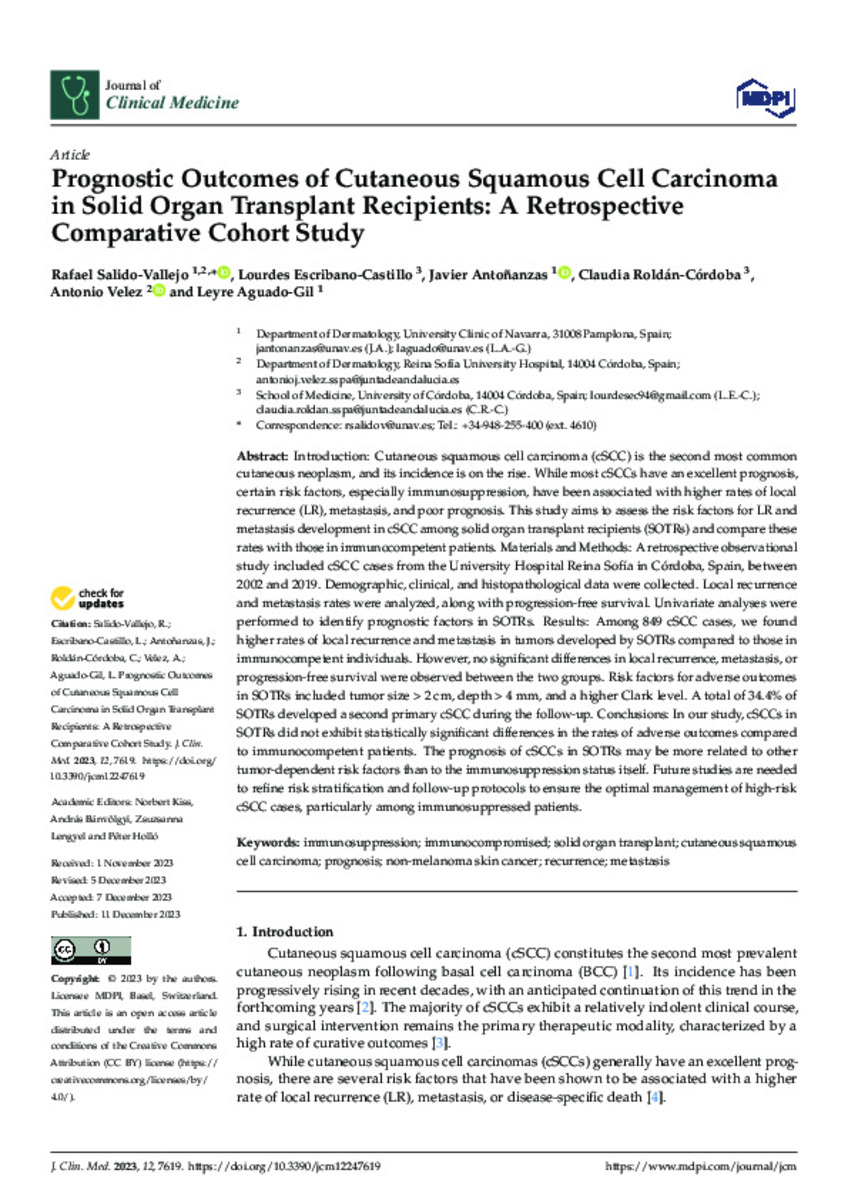Prognostic Outcomes of Cutaneous Squamous Cell Carcinoma in Solid Organ Transplant Recipients: A Retrospective Comparative Cohort Study
Keywords:
Materias Investigacion::Ciencias de la Salud::Dermatología
Immunosuppression
Immunocompromised
Solid organ transplant
Cutaneous squamous cell carcinoma
Prognosis
Non-melanoma skin cancer
Recurrence
Metastasis
Note:
This article is an open access article
distributed under the terms and
conditions of the Creative Commons
Attribution (CC BY) license (https://
creativecommons.org/licenses/by/
4.0/).
Citation:
Salido-Vallejo, R. (Rafael); Escribano-Castillo, L. (Lourdes); Antoñanzas, J. (Javier); et al. "Prognostic Outcomes of Cutaneous Squamous Cell Carcinoma in Solid Organ Transplant Recipients: A Retrospective Comparative Cohort Study". Journal of Clinical Medicine. 12, 2023, 7619
Statistics and impact
0 citas en

0 citas en

Items in Dadun are protected by copyright, with all rights reserved, unless otherwise indicated.







